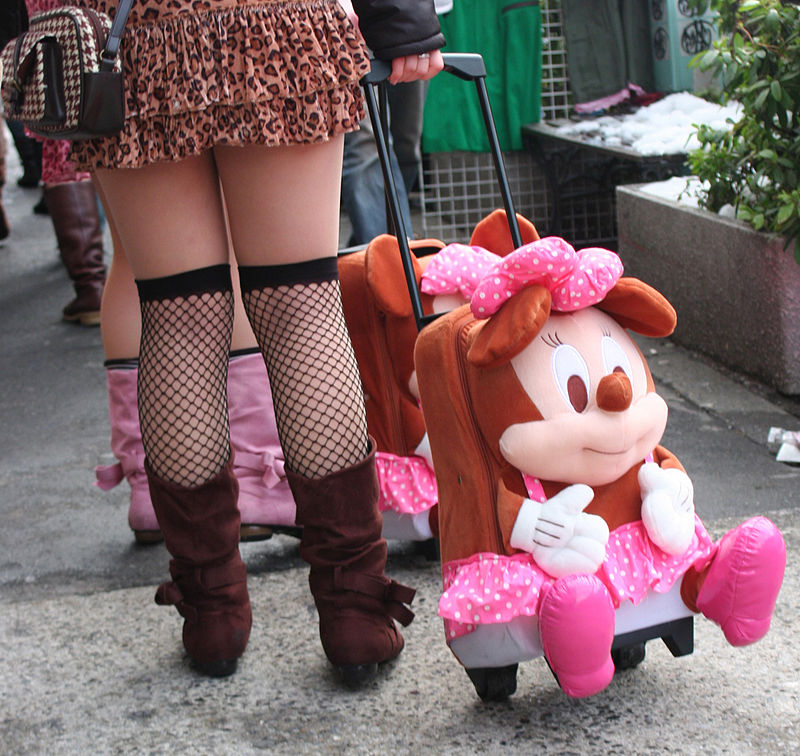“Not to be confused with Hawaii” — Wikipedia
There’s one category of posts that I especially enjoy researching for Glossophilia — and that’s the identification of words in other languages that can’t really be translated literally or directly into English because they embody such rich and complex clusters of nuance and meaning specific to their native lands. The Japanese word kawaii is one such example. “Cute,” you might say, is what it means. But that’s to over-simplify a word that sums up an entire and all-embracing national aesthetic, which has become something of a prescription for all areas of Japanese life and culture while reflecting many of its complexities and ambiguities. It might not be quite as straightforward and “cute” as it might first appear.
In 2014 the UK’s Collins English Dictionary added the word kawaii to its official lexicon, defining it as a “Japanese artistic and cultural style that emphasises the quality of cuteness, using bright colours and characters with a childlike appearance”. The definition sounds simple enough; however, a quick look at kawaii‘s etymology and history sheds some light on its extraordinary breadth of meaning and its enduring ambiguity,
Wikipedia‘s article on kawaii provides a comprehensive summary of its pervasiveness in and influence on Japanese culture. As the paragraph on kawaii as an aesthetic concept illustrates, it’s a term at the heart of Japan’s changing notion of its own national identity:
Soichi Masubuchi, in his work Kawaii Syndrome, claims “cute” and “neat” have taken precedence over the former Japanese aesthetics of “beautiful” and “refined”. As a cultural phenomenon, cuteness is increasingly accepted in Japan as a part of Japanese culture and national identity. Tomoyuki Sugiyama, author of Cool Japan, believes that “cuteness” is rooted in Japan’s harmony-loving culture, and Nobuyoshi Kurita, a sociology professor at Musashi University in Tokyo, has stated that “cute” is a “magic term” that encompasses everything that is acceptable and desirable in Japan.
And this aesthetic notion of kawaii underpins such complex issues as gender performance and physical attractiveness in Japanese culture, as well as more tangible trends in product design and fashion.
According to Wikipedia, the original definition of kawaii came from Lady Murasaki’s The Tale of Genji in which it referred to pitiable qualities. On Japan Powered, Chris Kincaid explains — referring partly to Sharon Kinsella’s 1996 article “Cuties in Japan” — that it derives from the word kawayushi, which “first appeared in dictionaries during the Taisho era (1912-1926). Kawayushi meant shy, pathetic, vulnerable, embarrassed, loveable, and small. Obviously, kawaii retains much of that meaning.” Niall Scott in his book Monsters and the Monstrous: Myths and Metaphors of Enduring Evil also quotes Kinsella in exploring this ambiguous and not necessarily entirely positive aesthetic concept: “As Kinsella notices, contemporary usage of kawaii reveals some traits of pity — kawaii applies both to small babies and frail old women — and “the term kawaiso derived directly from kawaii means pathetic, poor, and pitiable in a generally negative if not pleasing sense. Daniel Harris goes further linking the aesthetics of cuteness with that of deformity and rejection.”
“Pathetic, poor, and pitiable in a generally negative if not pleasing sense”: that’s quite a curious concept to grasp, and perhaps this is where cultural nuances and differences come into play. A contributor on Quora, also trying to capture this additional and one could argue more negative sense of kawaii that takes it beyond just “cute”, explains: “It’s really a cultural thing, but in a nutshell it seems to be describe something cute, adorable, or loveable. However, it can also mean to imply something pitiful or pathetic (albeit usually in a fairly endearing manner).”
For just a small glimpse into this aesthetic world that is fast becoming a global phenomenon, check out some examples of kawaii as it takes its form in coloring books, bento boxes, food charms, and food accessories, And remember, as Wikipedia warns, not to confuse it with Hawaii.
* * * * *

